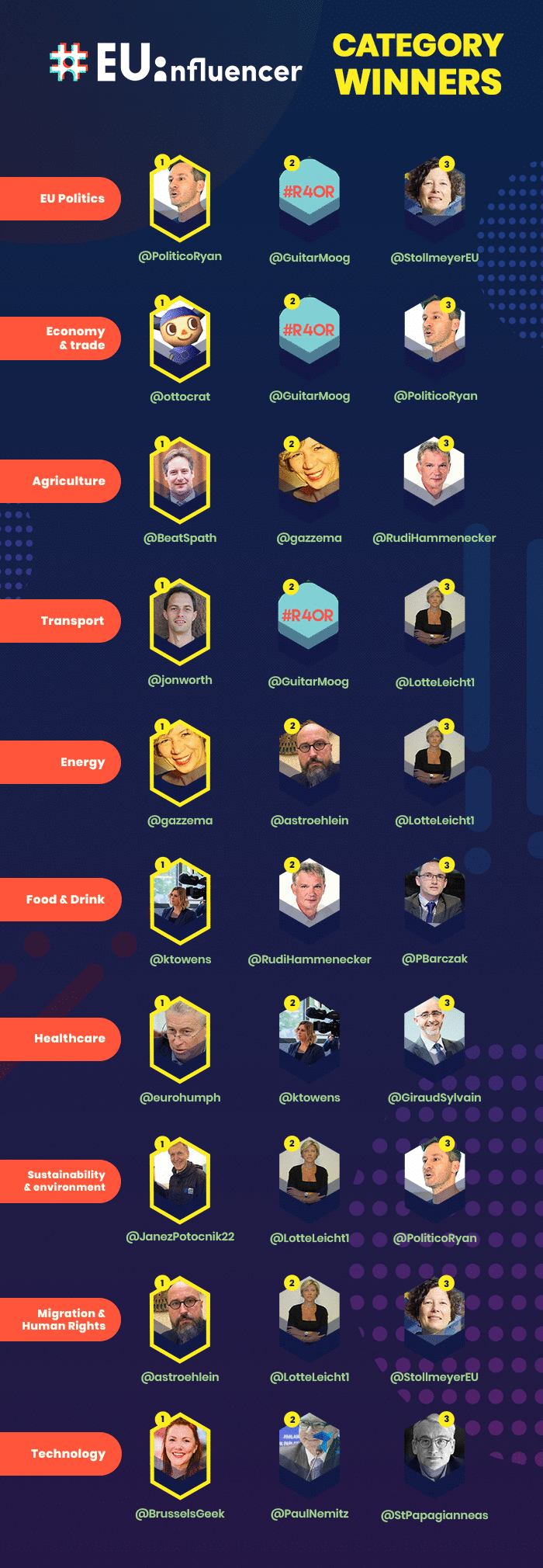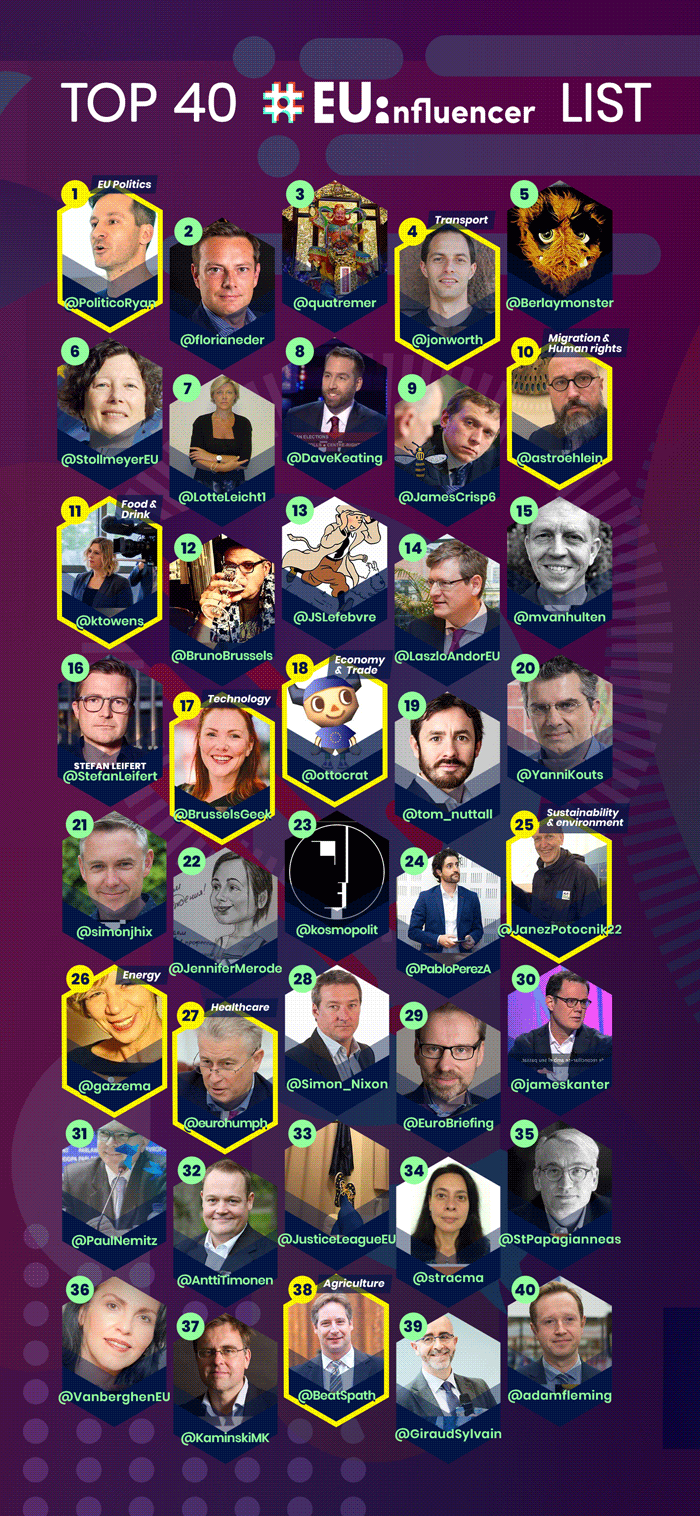#EUinfluencer is a yearly event about the power of social media in the Brussels Bubble. It connects communicators, policy makers and social media influencers, who share insights, tips and tactics and discuss the challenges and opportunities of digital.
On Tuesday September 2019, ZN and EURACTIV presented the third #EUinfluencer ranking and organised a debate to discuss:
- What can be done about the gender imbalance in the Brussels Bubble and on social media?
- Are populists threatening democracy using social media?
- Is social media turning the world into a fake news paradise?
- Is Twitter the new TV of EU politics?
ZN’s Philip Weiss presented the methodology. EURACTIV journalist Samuel Stolton and ZN’s Liora Kern moderated the discussion.
New this year is that ZN’s digital analysts ranked not only the top-40 but also the top influencers in 10 categories.
Below we proudly present this year’s #EUinfluencer lists.


Methodology
We created two rankings:
- Top influencers in ten categories (step 1 & 2)
- Top 40 influencers (step 3, 4 & 5)
TOP influencers per category
STEP 1: FINDING INFLUENCERS
We used social media monitoring tools to find users tweeting about ten categories related to European Union affairs:
- Politics
- Economy
- Agriculture
- Transport
- Energy
- Food & Drink
- Healthcare
- Sustainability & environment
- Migration & Human Rights
- Technology
We created queries, that would allow multilingual responses and would focus our results on Brussels’ influencers.
STEP 2: TOP INFLUENCERS PER CATEGORY
We retrieved the number of tweets about each category for the last year[1], the name of the user and their number of followers. With these data we built a graph for each of the categories, looking at different factors.
With this methodology we classificate influencers per interest, potential reach, number of tweets and followers.
We gathered the top users from “high interest, high potential reach” of each category and they were ordered by followers and number of mentions to decide the top-3 of each category[2].
#EUinfluencer top-40
STEP 3: CREATION OF THE TOP-100 #EUINFLUENCER LIST
We gathered around 100 influencers who were the top influencers of each category, considering the following KPIs:
- Number of followers
- Average retweets per tweet (total retweets divided by the number of tweets)
- Density of followers in Brussels (the amount of followers of the influencer in Brussels divided by his or her amount of followers)
- NEW THIS YEAR: Number of MEP followers
STEP 4: CRITERIA FOR INCLUSION – EXCLUSION
We established criteria for inclusion and exclusion from the list:
- Only individuals included, no companies and/or association accounts
- MEPs, Commissioners and top Commission and Parliament workers excluded
STEP 5: ESTABLISH TOP-40 #EUINFLUENCER LIST
And voila! This is how we created our #EUinfluencer top-40 list. Using our own unique formula and years of experience in target and influencer mappings.
Contact us for more information.
[2] Since this is sometimes a subjective decision, number of mentions criteria was highly weightered. In case of draw, KPIs as number of MEPs following helped to tiebreak.











